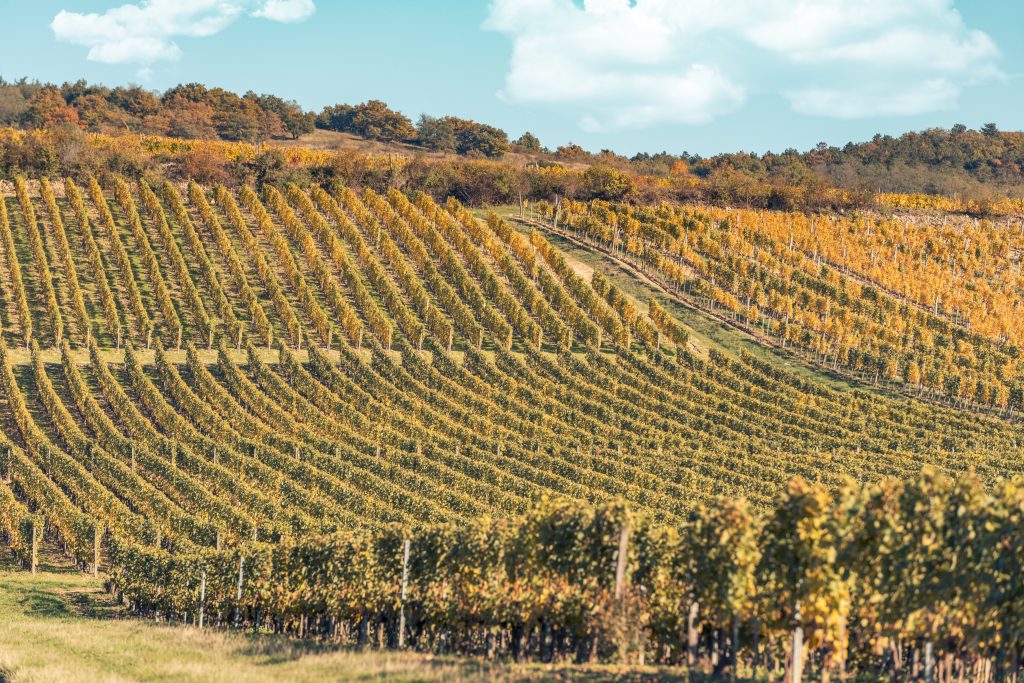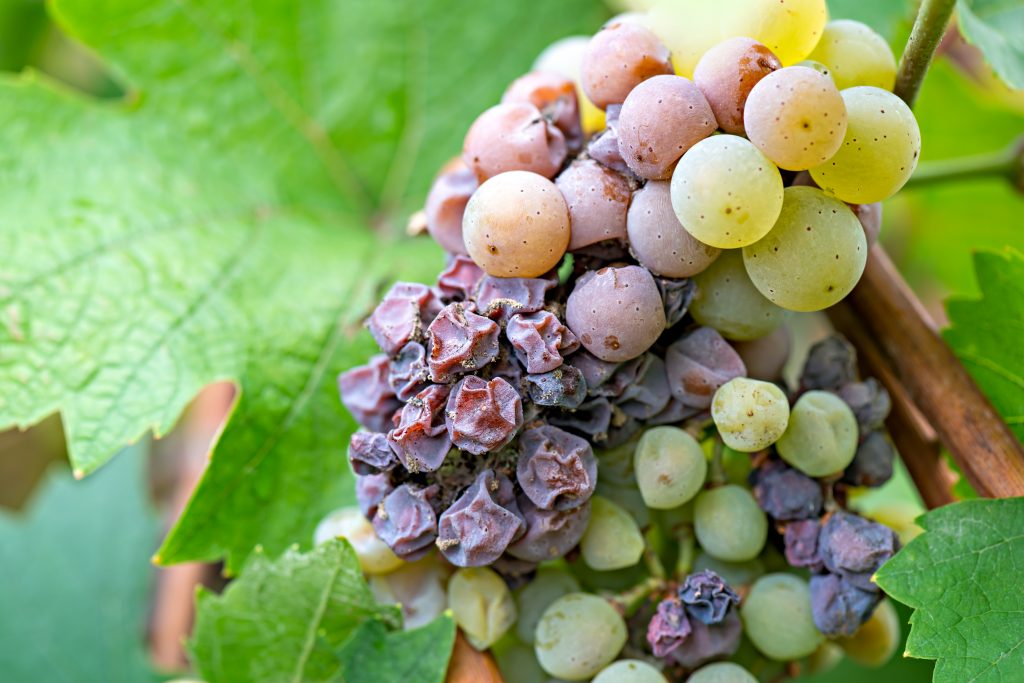Tokaj faces a dearth of workers as elderly pickers retire
Hungary’s famous sweet wine region could be striding towards a crisis, producers tell db, as highly skilled, mostly female pickers approach retirement age, with no one to replace them.

“You would never find a man doing it,” says Dr Gabriella Mészáro, a wine educator at Tokaji-Hegyalja University. “It’s always been this way”.
She is referring to the fact that the lion’s share of the intricate work picking Tokaji’s shrivelled berries one by one to make the region’s luxuriously sweet aszú wine, is carried out by elderly women.
Step into one of the many vineyards of Tokaj in north Hungary during picking season, and among the rows of vines clouded with ‘noble rot’ you’ll spot tiny, wrinkled women, hair wrapped in colourful scarves, a wooden ‘puttony’ basket on their arm, moving with slow determination up and down the corridors. Such is the painstaking nature of the work that pickers harvest a maximum of 10 kilos per day, enough to fill around half a basket.
So revered is the picking process in Tokaj that in the 18th century there was a penalty fee for swearing in the region’s vineyards, presumably lest it offend the vines. And while that idea might seem old fashioned, it’s not the only ancient tradition that surrounds the practice. Many of today’s producers still firmly hold the opinion that picking is strictly women’s work.
“We have one man picking the whites in our vineyards but only because his wife has been doing it for many years. He does OK… but it’s different with women,” Tamás Oroszlán, commercial director for Hétszőlő, tells the drinks business.
What makes women better qualified for the job? “You need to be patient,” Oroszlan says with a self-deprecating laugh.
This widely accepted point of view may, however, be setting Tokaji wineries up for a fall in the coming years.
“The problem is looming that the old women who know how to pick the berries for aszú wines are retiring and there is no one to replace them,” says Caroline Gilby MW, who specialises in wines from central and eastern Europe, with a special focus on sweet wines.
With the knowledge of the complex task at risk of being lost along with its pensionable practitioners, wineries must act now if they want to guarantee a work force for future vintages.

“The average age of a picker is about 60 years old, and while in the past few years we’ve had more younger pickers coming through from the gypsy community in our local villages, of our 35-40 pickers we only have around 10%, maybe four or five pickers, which are the old, knowledgeable ones with the great experience we need,” says Gergely Makai, chief winemaker and technical director at Hétszőlő, which is owned by French entrepreneur Michel Reybier, who also counts Bordeaux estate Cos d’Estournel among his portfolio.
“Aszú berries have different stages of maturity and quality and at Hétszőlő we only accept the best quality so pickers have to make sure that they check both the colour and the texture,” explains Makai. “The berry must be shrivelled and dried but it also has to have a certain ‘gelatine’ kind of touch, those are the best ones.”
Being able to recognise the ‘perfect’ berries by sight and touch alone is second nature to the 60-something-year-old female pickers, and is vital to ensuring the quality of exceptional Tokaji dessert wines that the region has become world famous for.
Partner Content
“It’s very hard to find people who know how to do it and what they’re looking for,” says Istvan Balassa of Balassa Wine. “There are lots of different types of mould on the berries, so pickers need to know how to separate the good mould from the bad.”

So what action is being taken to ensure the knowledge is passed on before it’s too late?
“We are trying to integrate and teach younger pickers. It seems to be the only chance in order to have a secure picker group for the future,” says Makai. “We need the old pickers to teach not just the young ones but also the wine council of the region, and wineries themselves need to invest more into the youngsters. At Hétszőlő we give some lessons before the picking starts in the mornings, and we have some employees who keep an eye on the younger ones, monitoring the quality at the end of each day and giving them feedback.”
The key question, perhaps, is whether younger pickers will be able to make a living from the wage that picking aszú berries pays, as this will surely determine how attractive a prospect it is to follow in their elders’ footsteps.
“We pay by performance,” says Makai. “If someone works hard and has a good knowledge, they can earn a good wage in a season, and it could be great money for youngsters.”
The younger generation may also be rather less inclined to face the climatic realities of being outside among the vines all day that their predecessors have become accustomed to. “The weather conditions are not the most pleasant during the later picking season, with cold mornings, fog, and high humidity,” Makai acknowledges.
A dwindling picking force is just one factor contributing to the acceleration in the production and marketing of Hungary’s dry white wines in recent years. As producers making dry white styles are not required to hand-pick berries one by one in the same way as they are legally bound in the making of aszú wines, harvesting is easier, faster, the quantities achieved greater.
Add to this the fact that dry whites from the nation need only be aged for five to six months compared with the compulsory two-year ageing for sweet wines, and it certainly makes financial sense to go down a dry route.
Then there’s the precarious nature of the botrytis itself, for which conditions must be ideal to manifest.
“If it’s too hot and dry, the mould won’t come,” says Oroszlán, who has witnessed climate change making it increasingly more challenging. “Three or four years out of every 10 you’ll get a perfect vintage. The rest, you just pray… To only make money from sweet wines, if you have a bad year, then what?”
Related news
Wines of Hungary targets Korean consumers for International Aszú Day
Wines of Hungary makes central Europe the centre of attention




